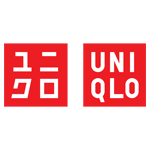What Is the Progressive Wage Model in Singapore?
The Progressive Wage Model (PWM) in Singapore is a structured wage system designed to boost the wages of low-income workers. It achieves this by setting minimum wage standards within specific industries.
Crafted by labour unions, employers, and governmental bodies, the Progressive Wage Model (PWM) is a groundbreaking initiative in Singapore.
That said—unlike conventional minimum wage laws—the PWM is sector-specific and encompasses various progressive wage ladders tailored to different job roles and skill levels.
Singapore’s Deputy Prime Minister, Lawrence Wong, said: “With progressive wages (and Workfare*, also known as WIS) combined together, we want to see lower-wage workers in Singapore have higher starting salaries.
But we also want to see them have continued career progression throughout their working lives. This means not just good starting salaries but having the new wage increases tied to a skills ladder.
“Ultimately, we want to achieve a compression of wages in our workplace, not increasing wage gaps but wage compression largely by uplifting of lower-wage workers in Singapore. That is what we hope to achieve.”
How Does the Progressive Wage Model Work?
The Progressive Wage Model covers several sectors that predominantly employ low-wage workers, including:
- Cleaning
- Security
- Landscaping
- Healthcare support services.
It has covered many of these industries since 1 September 2022. Since March 2023, Food services PWM and occupational PWs for administrators and drivers have been implemented. In addition, it covered the waste management sector from July 2023.
Within each sector, the PWM delineates wage progression frameworks tailored to specific job scopes—such as cleaners, security officers, landscape maintenance workers, and healthcare aides.
When choosing these sectors, the Ministry of Manpower considered:
- The number of resident lower-wage workers in these sectors.
- Evaluation of the suitability of PWM implementation, including the capacity for stakeholders to participate meaningfully in tripartite discussions.
- Input from tripartite partners regarding the feasibility and effectiveness of PWM extension.
Which Sectors Are Covered by the Progressive Wage Model?
The Progressive Wage Model covers several sectors that predominantly employ low-wage workers, including:
- Cleaning
- Security
- Landscaping
- Healthcare support services.
It has covered many of these industries since 1 September 2022. Since March 2023, Food services PWM and occupational PWs for administrators and drivers have been implemented. In addition, it covered the waste management sector from July 2023.
Within each sector, the PWM delineates wage progression frameworks tailored to specific job scopes—such as cleaners, security officers, landscape maintenance workers, and healthcare aides.
When choosing these sectors, the Ministry of Manpower considered:
- The number of resident lower-wage workers in these sectors.
- Evaluation of the suitability of PWM implementation, including the capacity for stakeholders to participate meaningfully in tripartite discussions.
- Input from tripartite partners regarding the feasibility and effectiveness of PWM extension.
Who Does the PWM Cover?
The Progressive Wage Model (PWM) extends its coverage to Singaporean citizens and permanent residents (PRs) engaged in full-time or part-time employment under a contract of service.
Employers seeking to renew current work permits or apply for new ones for foreign employees holding Work Permits, S Passes, or Employment Passes must adhere to two essential requirements:
- Meeting the PWM criteria for local employees included in the relevant PWM frameworks.
- Fulfilling the requirements of the Labour Quota System (LQS) for all other local employees.
What Are the Benefits of Implementing the Progressive Wage Model for Workers and Employers?
For Workers
- Fair Wages: The PWM ensures that workers receive wages commensurate with their skills and contributions, reducing income inequality and enhancing financial security.
- Skills Development: By incentivizing skills upgrading and career progression, the PWM empowers workers to enhance their employability and access better-paying job opportunities.
- Improved Quality of Life: Higher wages enable low-income workers to afford essential goods and services, and this improves their standard of living and overall well-being.
- Dignity and Recognition: The PWM acknowledges the value of low-wage work and provides workers with a sense of dignity, respect, and recognition for their contributions to society.
- Promotion of Social Mobility: The PWM allows upward economic mobility by providing low-wage workers with opportunities for skills enhancement and career advancement, enabling them to break the cycle of poverty and achieve greater financial stability.
- Enhanced Workplace Productivity: The PWM builds a motivated and skilled workforce, leading to more success and opportunity for workers.
For Employers
- Improved Productivity: The PWM boosts productivity by investing in skills training and development. Therefore, employers can cultivate a more skilled and productive workforce—leading to increased operational efficiency and competitiveness.
- Reduced Turnover: Offering fair wages and career advancement opportunities under the PWM fosters greater employee satisfaction and loyalty and reduces staff turnover and recruitment costs.
- Positive Reputation: Employers that adhere to the PWM demonstrate their commitment to corporate social responsibility and fair labour practices; this enhances their reputation and brand image within the community.
Compliance with Regulations: Adhering to the PWM ensures compliance with government regulations on fair wages and labour standards, mitigating the risk of fines, penalties, and reputational damage.













